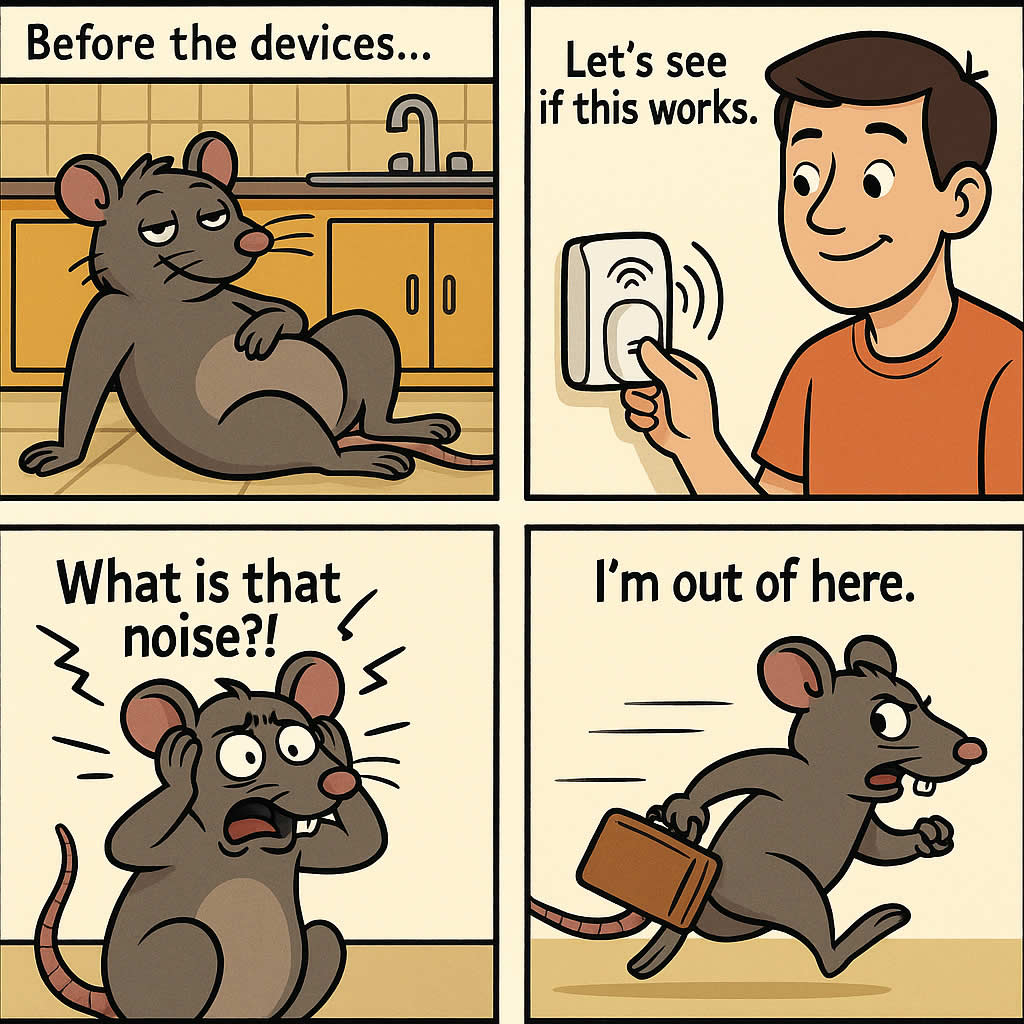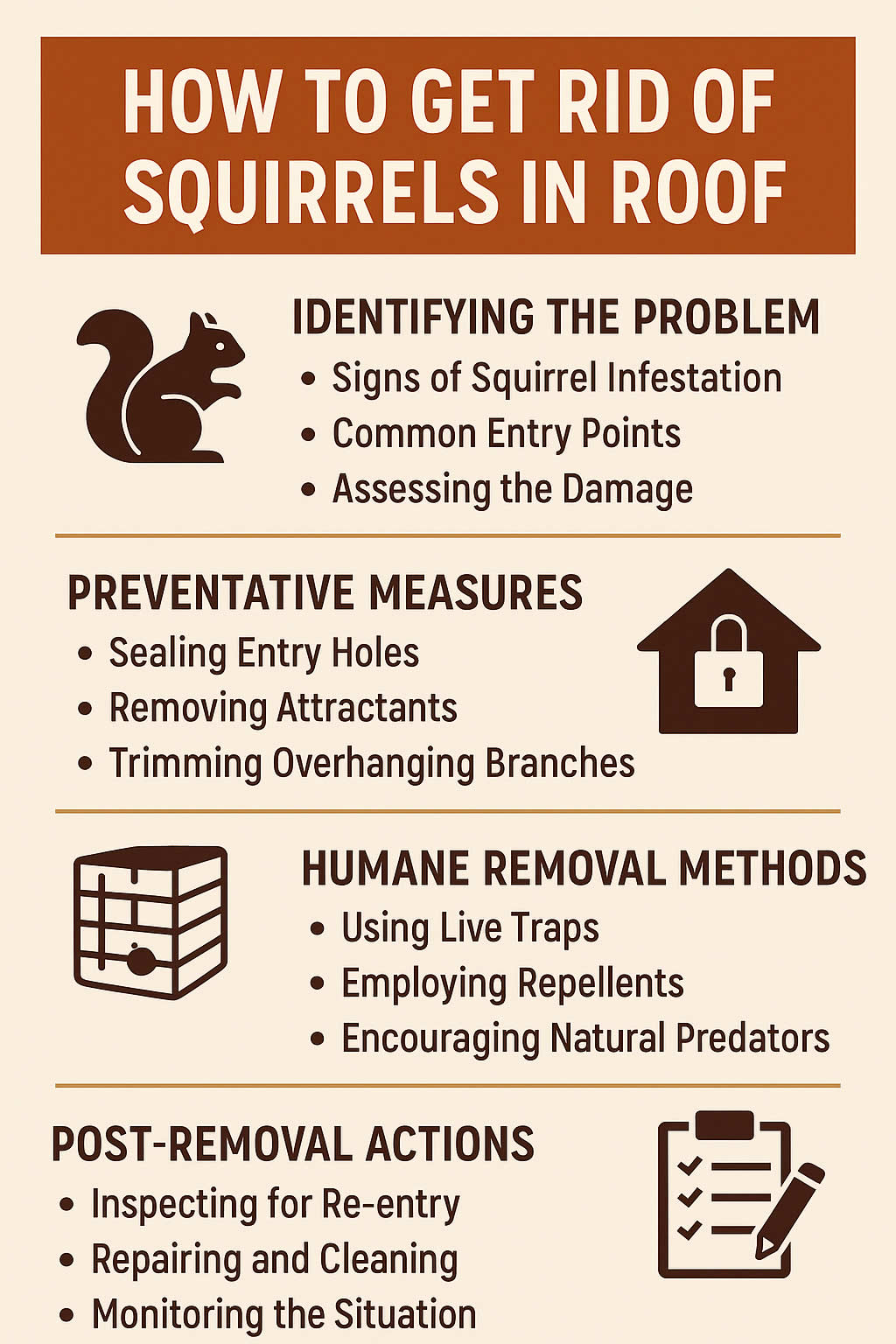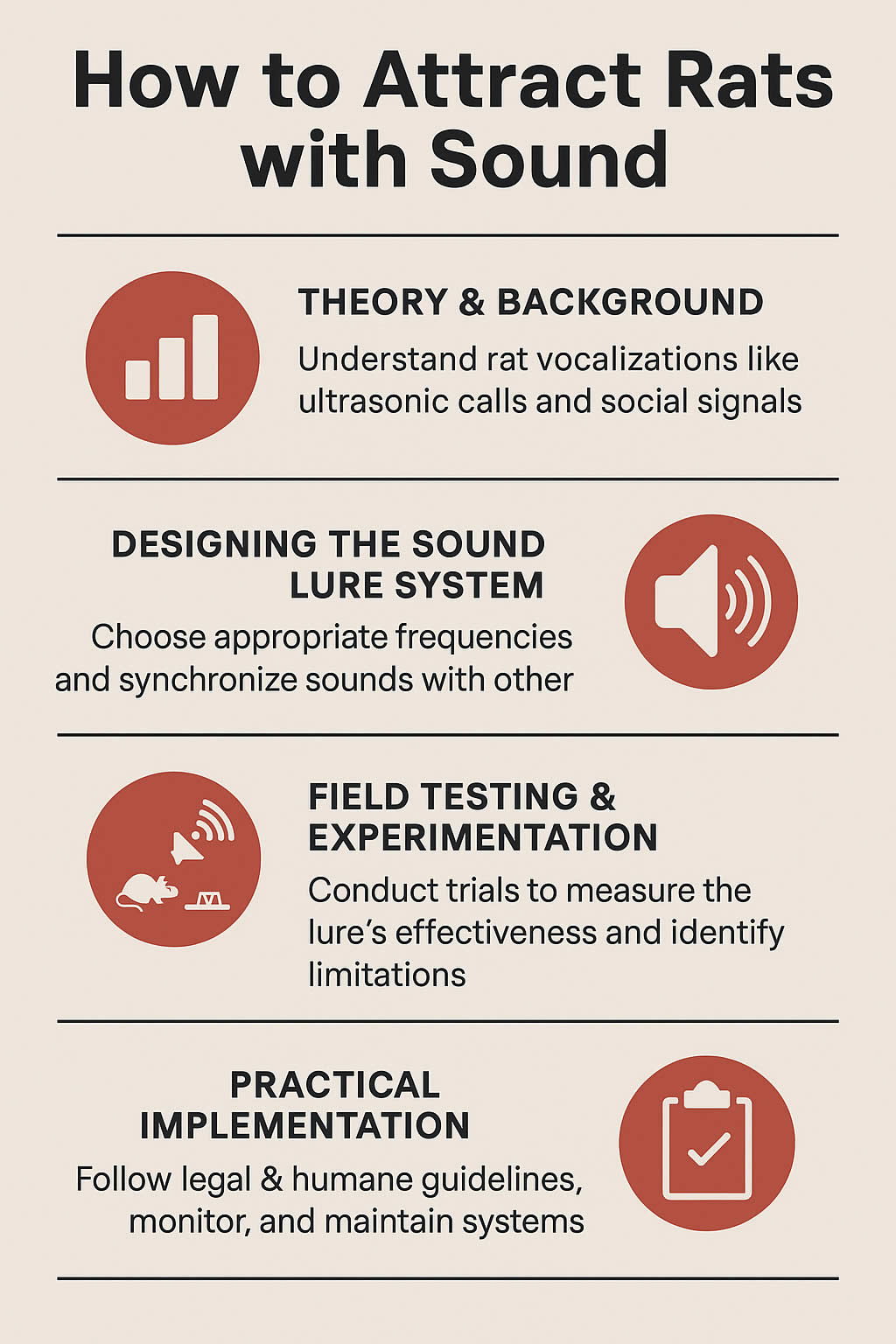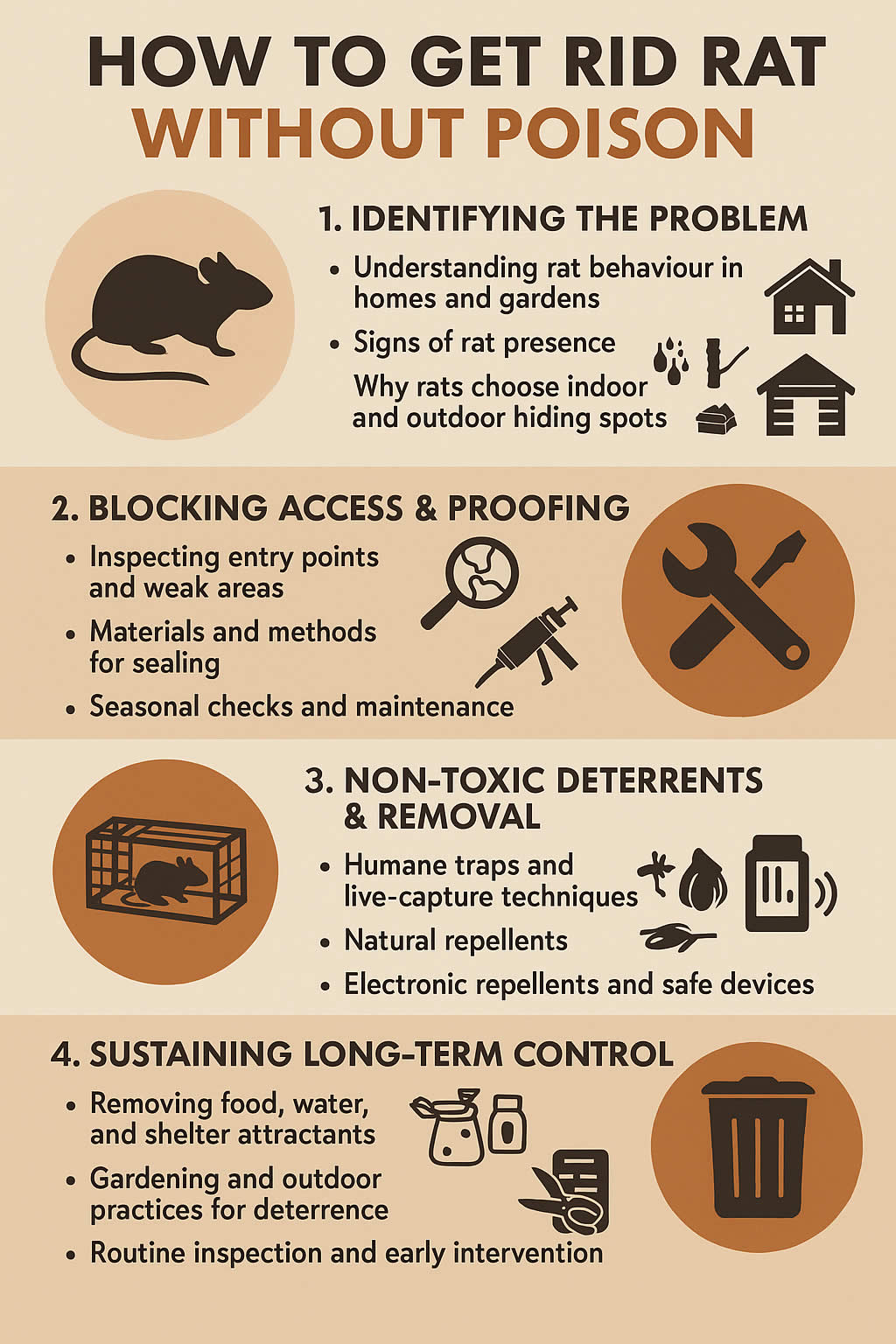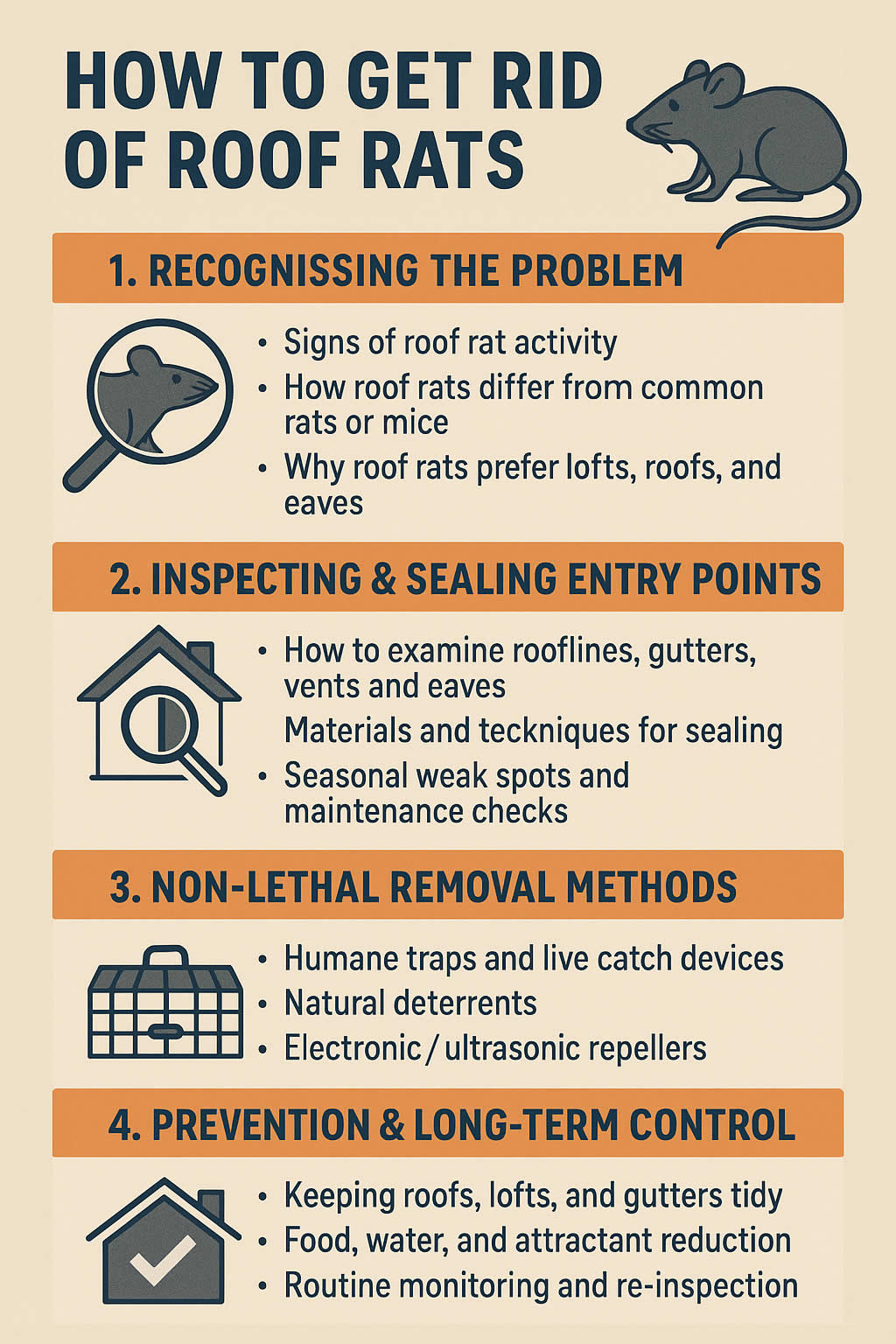Related Queries
ToggleIf you’ve spotted signs of rats in your home, you’ll want them gone fast—and for good. Maybe you’ve seen droppings under the sink or heard scratching sounds behind the walls at night. It’s unsettling, and it can make you feel like your space isn’t your own anymore.
But before you start laying down traps or calling pest control, you might be wondering whether you can deal with it on your own—especially using something cleaner, quieter, and more modern. That’s where electronic methods come in. They’ve become more popular recently because they’re easy to use and, for many people, feel like a more hands-off way of sorting the problem.
In this post, you’ll find out what electronic options you’ve got, how they actually work, and whether they’re worth trying. Everything’s written in simple, everyday English, so you don’t need to be an expert to follow along.
What Are Electronic Rodent Repellents?
Electronic rodent repellents are devices you plug into the wall or power with batteries. They send out sound waves or vibrations that rats find uncomfortable, which encourages them to leave the area. You won’t hear anything yourself because the sound is at a higher frequency than what humans can hear.
There are a couple of types:
- Ultrasonic repellers: These send out high-pitched sound waves.
- Electromagnetic repellers: These claim to send signals through the wiring in your walls.
They don’t kill rats—they’re designed to push them out of your home.
How Do Ultrasonic Repellents Work?
Ultrasonic devices work by creating a sound environment that makes it hard for rats to settle in. Rats rely on sound to communicate and move around. The high-frequency noise disrupts that. It becomes unpleasant, so they look for somewhere quieter.
The sound waves don’t travel through walls, though. They usually bounce around the room they’re placed in. That’s why one device might not be enough if you’ve got rats in more than one spot.
What you need to keep in mind:
- The device needs to be plugged into a wall where it’s not blocked by furniture.
- You might need more than one for bigger spaces or multiple rooms.
- It might take a week or two to see a change.
Do Electromagnetic Devices Actually Work?
Electromagnetic repellents are a bit more controversial. They’re meant to work by changing the electromagnetic field in your home’s wiring, which should then affect how comfortable rats feel inside the walls.
The idea is clever, but there isn’t a lot of solid research backing it up. Some people say they’ve seen a reduction in activity. Others say they didn’t notice any difference. It’s hit or miss, to be honest.
If you do want to give them a go, it’s worth using them alongside other methods, rather than relying on them on their own.
Are Electronic Devices Safe to Use Around Pets and Kids?
Most electronic repellents are safe to use in homes with pets and children, but you’ll still need to check the label. Some ultrasonic devices might affect animals like hamsters, guinea pigs, or pet rats, since they can hear higher frequencies.
Cats and dogs usually don’t react to the sound, but if you notice them acting strangely, try moving the device to another room or turning it off for a bit to see if it helps.
As long as you use them properly—plugged in where they’re meant to be and away from water—they’re a safe option. There’s no poison, no sharp traps, and no mess to clean up afterwards.
Where Should You Place Electronic Rat Repellers?
Placement makes a big difference. You want to set them up in the places where rats are active, so start by checking for signs like:
- Droppings near skirting boards or in cupboards
- Gnaw marks on wires or food packaging
- Nests made from paper or soft materials
Once you’ve found those signs, plug your device into a wall socket in that room. Make sure it’s clear of furniture so the sound can travel properly.
Don’t hide it behind the sofa or leave it in a drawer—it needs open space to work. If rats are active in multiple areas, use one repeller per room.
Can You Use Electronic Repellers as a Long-Term Solution?
They can be part of a longer-term solution, but they don’t work in isolation. Think of them as one piece of the puzzle.
Rats are smart. If they find food, water, or warmth, they’ll try to stick around—even if the sound bothers them. That’s why you also need to deal with whatever’s drawing them in.
Here’s what you’ll want to do alongside using electronic repellents:
- Block up holes and gaps where rats might be getting in
- Keep food sealed and stored away
- Clear up rubbish regularly
- Fix any leaks that might provide a water source
If you don’t deal with these things, the repellent might just move them from one part of the house to another, rather than getting rid of them.
How Long Does It Take for Electronic Repellers to Work?
Don’t expect results overnight. It can take anywhere from a few days to a couple of weeks before you start noticing a difference.
Rats might become more active at first—moving around more as they try to find quieter spots. That’s actually a sign the repeller is doing something. Keep it running continuously and stay patient.
If you’re still hearing noises after a few weeks, you might need to add another unit or check whether they’ve moved to a different room.
Can You Rely on Electronic Methods Alone?
You can try, but it’s not always enough. For a small, new problem, electronic devices might be enough to push the rats out. But if you’ve got a proper rat infestation, it’s unlikely that these will sort the whole thing.
In that case, you might need to use them alongside:
- Snap traps or live traps (placed safely and legally)
- Professional pest control if it’s serious
- Careful home maintenance to close up entry points
The good thing is that even if you do call in a professional, they might still suggest keeping the electronic repellers going afterwards—to help stop them from coming back.
Do Rats Ever Get Used to Ultrasonic Sounds?
It’s possible. Rats are adaptable, and if they realise that the sound isn’t actually dangerous, they might start ignoring it. That’s why some devices come with a feature that changes the frequency randomly. The idea is to stop rats from getting used to one steady sound.
If your device has that option, switch it on. If not, you can try moving the unit to a different room every so often, or combining it with a different type of repellent for a while.
What Should You Do If the Electronic Repellent Isn’t Working?
If nothing’s changed after a few weeks, it’s worth reviewing how you’re using the device. Go over the basics:
- Is it plugged into an open area, not blocked by anything?
- Is it in the right spot—where you’ve seen signs of rats?
- Have you sealed up any entry points, or are they still getting in?
- Is there anything attracting them—like food or shelter?
If everything looks fine and you’ve tried more than one device, it might just not be strong enough for the problem you’ve got. At that point, calling in pest control can save you a lot of time and stress.
Are There Any Downsides to Using Electronic Repellers?
Like anything, they’ve got their pros and cons. On the plus side:
- No poison or dangerous traps
- Easy to set up
- Quiet (for humans) and low-maintenance
But on the downside:
- They might not work for every infestation
- You might need several units to cover your whole home
- Rats can sometimes get used to the sound
- Not much scientific proof behind some of the claims
So it really depends on your situation. If you’ve just noticed a rat or two, and you want a low-effort way to push them out, it’s worth trying. But if you’ve got a serious issue, you’ll probably need to combine methods to get the job done.
Final Thoughts
Getting rid of rats in your house using electronic methods can be a decent first step. It’s clean, simple, and doesn’t put your pets or kids at risk. But it works best when you use it alongside a few other steps—like sealing gaps, keeping your kitchen tidy, and staying on top of maintenance.
It’s not always a quick fix. You’ll need a bit of patience, and in some cases, a backup plan. But if you’ve only got light activity or you’re looking to prevent rats from settling in, electronic repellents can be a helpful tool to have on your side.
Pest Removal Bristol – Squirrel Removal Essex – Flea Control Wiltshire
